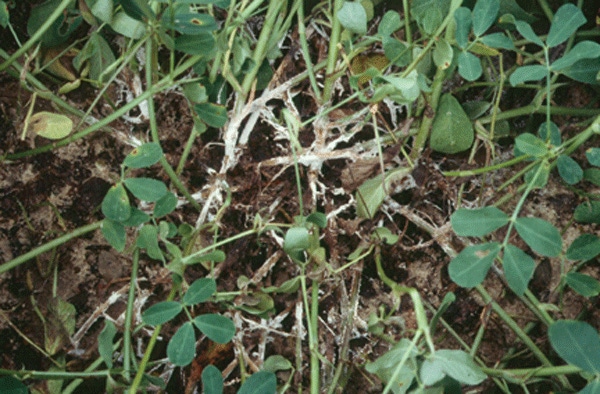March 7, 2012

Southeastern peanut producers now have several good varieties from which to choose, but they still shouldn’t neglect the basics of crop variety selection, says Barry Tillman, University of Florida agronomist and plant breeder.
“These basics include which varieties are available, what is a variety’s disease resistance, what is its seed size, calcium requirements, growth habit and maturity,” says Tillman.
“Growth habit can factor into the type of equipment you have for digging because some varieties are more prostrate and others are more upright.”
It all begins, says Tillman, with crop rotation. “If we don’t have a good rotation program, then our varieties can’t overcome some of our disease problems. The key is good crop rotation — if you don’t do that well — nothing else really matters,” Tillman said at the recent Georgia Peanut Farm Show in Albany, Ga.
Looking at the seed available for the Southeast in 2012, Tillman says Georgia-06G is the dominant variety, followed by Georgia-07W, Florida-07, Georgia Greener and Tifguard. “These five varieties will make up all of our seed acreage in 2012,” he says.
Growers should look at several years of variety trial data and try and match the variety to specific field situations, says Tillman.
“In some cases, I’ve seen farms that have a lot of white mold, so you’d want to choose a variety that’ll minimize your risk. Also, to minimize risks, I would encourage growers to plant at least two varieties. You never know how varieties will react. We have five varieties that are very good, but some are better in certain situations than others.
“For example, if you have nematode problems in your field, Tifguard is your best choice. This is a variety that has near immunity compared to resistance, and that’s a great tool for you to use. Also, evaluate new varieties on your farm in a way that’s meaningful, such as planting them side-by-side in the same fields rather than in different fields.”
In variety trials conducted in Florida and Georgia, all of the new varieties have grouped towards the top in terms of yield potential, especially compared to the old standard Georgia Green, says Tillman, so there are plenty of options in terms of productivity.
Differ in disease resistance
“Some of the differences we did see in these varieties were related to disease resistance. We have resistance and we have immunity. I see some white mold in almost every field I walk into.
“There are differences in some varieties, but it’s resistance and not immunity. Immunity means there will be no disease occurring and no disease present.”
All varieties, he says, have some disease, it just depends on how much they get.
“When you put them in the same field, and in the same situation together, you can begin to see the relative resistance. So we compare the varieties and rank them.
“This data is used for Peanut Rx, which gives a relative ranking to varieties based on their tomato spotted wilt virus (TSWV) resistance, white mold resistance and leafspot resistance.”
Immunity is when no disease occurs, says Tillman. “The only example we have of this is Tifguard and its immunity to root-knot nematode. It’s a very different way of looking at disease resistance.”
If a variety has a lot of disease, then it’s susceptible, he says. There also are intermediate and resistant varieties, he says.
“They’ll all have some disease. There also are environmental effects. The environment has a big influence on the expression of a disease in a field. We probably will see some white mold disease in all varieties, no matter how resistant they may be. But there’s very little environmental influence on root-knot nematode.”
Georgia Green once was the most disease-resistant variety in Peanut Rx, says Tillman. Now, however, all of the new varieties rank higher than Georgia Green in resistance to TSWV.
“Most of them are similar or better on leafspot, and most of them are similar or better on white mold. Florida 07, Georgia-07W and Tifguard all have pretty good resistance to white mold compared to our other options.”
The University of Florida’s new release — Florun ‘107’ — has high yield, good grades, good TSWV-resistance moderate white mold resistance but smaller seed size, he says. Also, it is high oleic.
“What is high oleic, and why is it important? In terms of oil content, a peanut is about 50-percent oil. That oil is made up of fatty acids. In a high-oleic peanut, the oleic acid type is 80 percent of the total oil.
“Linoleic is 2 percent and the others are about 18 percent. In a normal type, it’s about 60 percent oleic, 20 percent linoleic and about 20 percent other oils.
“We have replaced a fraction of oil that oxidizes or becomes rancid quicker with a fraction that does not. That increases the shelf life of peanuts and peanut products.”
This high-oleic trait, he adds, makes the oil quality similar to olive oil. “It’s a high-quality oil, and that’s important because our competitors are using it and our manufacturers are requiring it.”
About the Author(s)
You May Also Like




